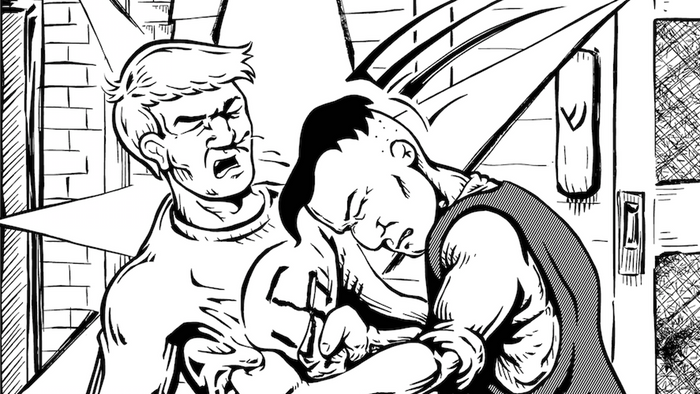Xenophobic extremists arrive at park, followed closely by counter-protesters. The extremists carry flags with swastikas, and make Nazi salutes. Insults are hurled, scuffles devolve into clashes. Dozens are injured, and a woman killed. The governor declares a state of emergency. This was the scene that unfolded in Charlottesville, Virginia on August 11 & 12, 2017 at the Unite the Right Rally.
Eighty-four years earlier a similar scene overran the streets of Toronto, after Adolf Hitler was named chancellor of Germany in 1933. Simultaneously, North America was experiencing a rise in immigration, including Jews fleeing persecution in Europe. In the midst of the Great Depression and ill-equipped to absorb the newcomers, some living in the Americas began identifying with the ideas of the Nazi party and harboring resentment against the newcomers who weren’t like them. Swastika clubs began popping up with the intent of expressing their displeasure with their Jewish and other foreign neighbors.
After months of building tensions, a group of Canadian youths displayed a banner bearing a swastika at a baseball game between the mainly Jewish and Italian team “Harbord”, and “St. Peter’s”, a team sponsored by a Catholic church of the same name. A confrontation between the gang holding the banner and Jewish youth supported by Italian immigrants devolved into a six hour riot as 10,000 people flooded the park and streets.
Little remains of the coverage of that riot except a single photograph and a few local newspaper clippings. Many of that generation are now gone. But Winnipeg-based writer Jamie Michaels is determined not to let the story of the Christie Pitts riot fall through the cracks of history. Michaels teamed up with illustrator Doug Fedrau to combine history and graphic storytelling to bring the Christie Pitts riot into the 21st century, at a time where strikingly similar events and sentiments are again gaining popularity. (more...)
Having studied in and lived on the campus that produced the above young lady, I took the opportunity to observe the social strata and diverse population of that institution. Faith Goldy would have certainly had access to the upper echelon of that microcosm of society, as I did. Her role as provocateur could be seen as the influence of that upper echelon on the commoners. She has little in common with the rabble that she seeks to lead and much more with the elites. Observers should focus less on the goons who have gathered around her, and more on the links to power and wealth that she seems able to tap into. She is no grass-roots organizer. Whose interests does she serve?
Related:


No comments:
Post a Comment